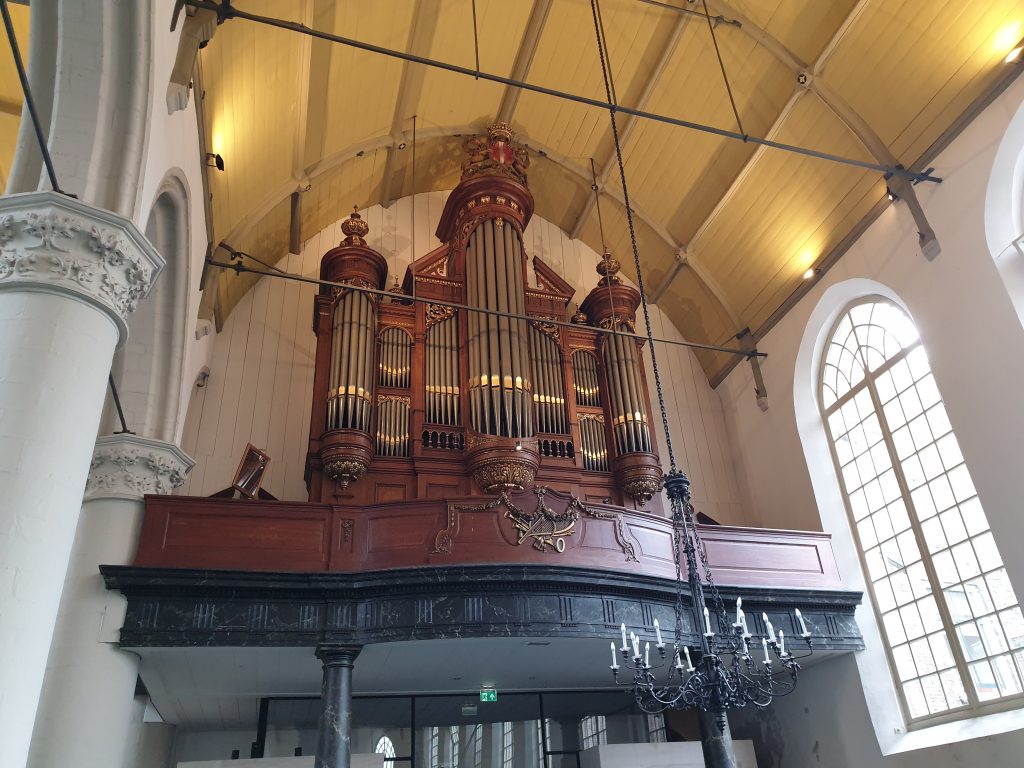A new sampleset has been added to the library: The Maarschalkerweerd organ from the Augustijnenkerk of Dordrecht (NL). In 1897, Dr. J.J. Stronck donated a substantial sum of 25,000 guilders for the construction of a new organ in Dordrecht. He set some conditions, including the preservation of the old balustrade and the Dordrecht coat of arms on the new organ case. The organ was placed in 1899 by the organ builder M. Maarschalkerweerd of Utrecht and solemnly consecrated on September 24 of that year by Dr. J.Th.A. Jonker.
Maarschalkerweerd & Zn has known different stylistic periods over the years. The Dutch period (1870-1885) was characterized by classical mechanical organs with modern elements of sound and wind supply. The French period (1885-1895) brought the introduction of an inverted free-standing console, swell box and Barker machine. Many details were consistent with the work of Cavaillé-Coll, such as French reeds and overblown flutes. In the German-French period (1895-1915), mechanical traction was replaced by pneumatics and membrane chest (Weigle system). The timbre remained French-oriented.
The organ in Dordrecht dates from the German-French period of Maarschalkerweerd & Zn. The timbre of Maarschalkerweerd is an important historical fact, grown from classical Dutch building principles. It developed according to an organ type that was given to him by his (indirect) “teacher”, the French organ maker Cavaillé-Coll, and Maarschalkerweerd’s organs are therefore a fine translation of Cavaillé-Coll’s work, without denying his own Dutch background.
Do you have a subscription to Sweelinq? Then log in to your account at www.sweelinq.com and download the new sample set of the Maarschalkerweerd organ from the Augustijnenkerk of Dordrecht from now on.
Source: https://www.augustijnenkerk.nl/orgel/orgelinformatiearchief & Brochure “Het Maarschalkerweerd-orgel van de Augustijnenkerk te Dordrecht”.


